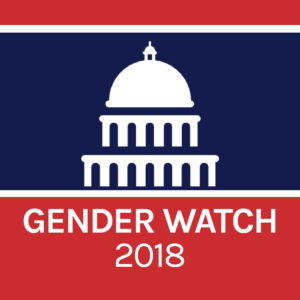There is a data point that stands out in Gender Watch 2018’s outlook for women running in next week’s Illinois primary: 7 of 10 women running for statewide elected executive offices are women of color, including all 6 Democratic women on the ballot for these posts.
This is notable for a number of reasons. In Illinois, it was not until 2014 that the first woman of color – current lieutenant governor Evelyn Sanguinetti (R) – was elected to a statewide executive office. Since her election, just one more woman of color – Susana Mendoza (D) – has been elected as state comptroller. Nationwide, women of color hold just 8 of 312 statewide elected executive offices today. Only 34 women of color have ever held statewide elected executive office in the United States.
Of course, these data are limited to women who’ve won office and do not include the women who’ve run and lost. But Illinois still stands out when analyzing the number of women of color candidates in past elections. Since 2000, the highest number of women of color who ran for statewide executive office in any one state in a single year was 10; in 2014, 10 Black women candidates ran for 5 statewide executive positions in Georgia (6 women ran for one position: superintendent of public instruction). None of these women won in November, though half made it to the general election ballot as Democratic nominees. In New Mexico, 5 women of color were candidates for statewide executive office in both 2014 and 2006. Filing deadlines have yet to pass and racial identification information is still incomplete on women candidates nationwide in 2018, but Illinois – at least for now – has put forward the second highest number of women of color for statewide executive office in any state and year since at least 2000.
Rutgers professor and CAWP senior scholar Kira Sanbonmatsu has investigated the dearth of women of color among statewide elected executive candidates and officeholders. Her research makes clear why we should pay attention to this dynamic in Illinois. Sanbonmatsu provides key insights into why women of color remain underrepresented in the candidate pool and among statewide elected executive officeholders: underrepresentation of women of color in state legislative and local offices limits the pool of candidates perceived as most eligible – and thus most likely to be recruited – for higher office; the concentration of elected officials of color in majority-minority districts dampens perceptions of their viability statewide; and the financial costs of running statewide might be particularly daunting to women of color, based on existing findings of fundraising challenges distinct to women and minority candidates. While there are also important – yet often overlooked – sites of advantage for women of color running statewide, Sanbonmatsu emphasizes that “women of color are likely to face a unique set of circumstances with respect to statewide office due to their location at the intersection of race and gender categories.”
In her analysis, Sanbonmatsu reminds us that the history of electing women of color to statewide executive office is a mostly recent one. To date, women of color have been elected to statewide executive positions in just 17 states. In contrast, 48 of the 50 states had elected a white woman to statewide executive office before 2000. Though Illinois has already broken this barrier and has elected Latinas to 2 of the 3 statewide executive offices being contested by women of color in 2018 (lieutenant governor and state comptroller), there is still the potential for a woman of color to make history in Illinois this year.
Attorney general candidate Erika Harold is in a tight two-way race for her party’s nomination on Tuesday. If successful, she would compete for an open seat in November to become the first Republican woman and first woman of color attorney general in Illinois, as well as the first Republican woman of color attorney general nationwide. Among Democrats, the sole woman of color running for attorney general – Sharon Fairley – won the endorsements of both the Chicago Tribune and the Chicago Sun-Times, but faces tough and more well-known primary opponents (including former governor Pat Quinn and State Senator Kwame Raoul).
Incumbent Comptroller Susana Mendoza (D) is poised to hold her post into 2019, and if gubernatorial candidate J.B. Pritzker’s lead in recent polls holds through Tuesday, this fall’s ballot is likely to have two women of color – Democrat Juliana Stratton and incumbent Republican Evelyn Sanguinetti – competing for lieutenant governor. The last time that two women of color competed against each other for lieutenant governor was in 2002 in Ohio.
There will be multiple stories to tell about Tuesday’s primary election in Illinois, but – win or lose – the presence of women of color as statewide contenders should be among them.


 From March to December 2018, the
From March to December 2018, the 